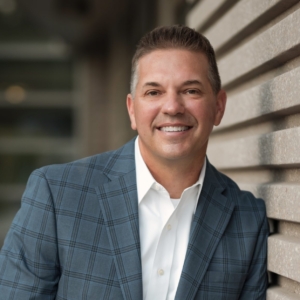Greater wellness through purposeful and consistent action
Mike Kuczala
It appears not a day goes by that doesn’t present another headline, article, social media post, or blog describing the tremendous stress and daily pressures of being in the classroom. These are often accompanied by the astonishing numbers of teachers who are leaving the profession. LinkedIn recently reported that, in November 2021, K-12 teachers’ separation rates surged to 66% above the levels reported 12 months earlier. There is also a decline in students choosing to become teachers. Those statistics, already dire before the pandemic, are now downright shocking.
I am no longer in the classroom, but education has always been my life. I come from a family of teachers and coaches—wife, sister, both parents, three grandparents, an aunt, and a cousin. It’s just what we do in my family. I’m currently the Academic Director for an educational consulting firm. I’ve made a post-classroom life of designing graduate-level education coursework, writing books, and providing professional development, which allows me to be in contact with teachers daily. Education is hurting. I feel that pain as my own and desire to help in any way I can.
What I can’t do here is solve the very specific issues that teachers face—less pandemic-related classroom support from paraprofessionals and parents, the balance between in-person and virtual teaching, students who have fallen behind, frequently changing guidance and decision-making, lack of substitute teachers, the politicization of K-12 education, and much more. These issues are evolving almost daily.
What I can do is offer some food for thought about how you can elevate your own life to prioritize your most prized possession: you. By doing so, you give both you and your students a great gift: feeling your best when you meet them each and every day.
The term “self-care” gets thrown around a lot these days. Honestly, when I was a young teacher, I would get frustrated when I heard direction to “take care of yourself” and move heaven and earth to ensure student success. What did not accompany this advice was any direction on exactly how to balance this directive.
I’m advising you to act in a very selfish way in order to be the very best you can be—and not just in July. It will naturally pay many dividends for your students and career.
The 5 habits I’m proposing can be accomplished quickly and simply, and you might choose just one habit to begin with. Before you do, I suggest you locate the most powerful tool you have in your possession to make this happen: a mirror. In it, you will find your greatest advocate for change, achievement, and living the best life possible.
As you embark on this journey, remember that we are pain/pleasure creatures. We are constantly weighing the pain and pleasure of every decision we make. A recent study published in the Journal of Consumer Psychology (Hardisty & Weber, 2020) essentially showed that we want to have pleasurable things as soon as possible and delay bad things as long as possible. For many, the pain of continuing in the education profession has clearly outweighed the pleasure of following their passion. Whether you decide to be physical, meditate, create a morning routine, or practice gratitude, these are all pain/pleasure decisions. The creation of a new habit can be difficult. Sometimes the pleasure of procrastinating far outweighs the pain of habit creation. But you need to understand that, when it comes to self-care, if you don’t take action immediately, it will be a cause of immense pain down the road. It could even cost you your life or take years off it.
It many societies and cultures around the world it can be difficult to remain healthy. Between chronic stress, the availability of food that we can hardly call “food,” more screen time and becoming more sedentary, the deck is stacked against us. Make no mistake: you can beat the odds. It’s about putting yourself at the top of your to-do list.
These strategies are probably familiar, but you are not implementing them on a regular basis. Consider this blog a reminder. These 5 habits won’t take much of your time, but they could be the first steps in being more consistent with self-care.
Check in with your body. If you’re feeling stressed, anxious, or depressed, check what you’re doing with your body, which usually reflects how we’re feeling. I like to say “our body will never betray our brain.” If you’re feeling, terrible you are most likely not in motion. It is also likely that your posture and facial expression represent what you’re feeling. Move immediately! Change your physical position. If you can only pull your shoulders back and put a smile on your face because you’re not able to be physically active, do it! Your physiology can change your psychology. By doing this, you are managing your own emotional state, which can instantly make you feel better. Turning to exercise can also help. Just eleven minutes of physical activity a day can boost your life expectancy (Ekelund et al., 2020) and counter the effects of sitting.
Identify your fear. I often remind myself of this quote from Shakespeare: “There is nothing either good or bad, but thinking makes it so.” It is you, and only you, who creates the meaning around any situation through your beliefs, previous experiences, filters, lenses, and personal history. That “thing” that is creating great stress in your brain can be reframed. Cognitive reframing can help minimize anxiety and depression and enhance quality of life (Shambhaw, Rumas, & Best, 2021). What belies most stress is fear. The key then becomes labeling the fear and moving past it. The next time you’re feeling burdened with stress, try this simple but effective process:
Answer the following questions: Is the fear realistic? This helps to reframe and create perspective. What is the worst possible thing that could happen? This also helps create perspective. How can I move past this? This creates action.
Practice gratitude. From enhanced well-being and deeper relationships to improved optimism and increased happiness, gratitude can improve both our physical and mental health (Ackerman, C. 2022). In the face of stress, feeling sad, or feeling anxious, being grateful can instantly change your mindset and defuse a situation. It also changes your perspective regarding what’s bothering you. Look for things to be grateful for. The more you feel thankful throughout the day the more moments of joy you can feel. If you’re up for writing in a gratitude journal each day or even once a week, the process of “gratitude mining” can be a significant help.
Create a morning routine. Research shows that coming to work in a bad mood can negatively impact your work (Rothard & Wilk, 2011). Mood affects performance. Start your morning in a positive way. Creating a reliable morning routine can help transform your day. For now, think about what gives you joy or contentment and takes less than 15 minutes. Next, set your alarm 15 minutes earlier than normal and do it. Trust me—it works!
Meditate on your “why.” Begin to think about your personal mission. What excites you? What do you value? How do you want to be remembered personally and professionally? My hope is that you will explore writing a personal mission statement. It provides a values-based statement in which to compare all future decisions and actions, which can be stress relieving itself. It can also help put you in the right state of mind as you begin each day in front of your students.
Good luck! Hopefully these steps will provide you with the momentum to create greater wellness through purposeful and consistent action. If you’re interested in learning more, please consider my new Corwin publication: The Peak Performing Teacher: 5 Habits for Success.
A more concise version of this blog was originally published at Corwin Connect and can be seen here: https://corwin-connect.com/2022/02/5-habits-to-support-yourself-in-challenging-times/
ABOUT THE AUTHOR
Mike Kuczala has delivered keynotes, given presentations, facilitated professional development and taught graduate courses on 4 continents. His presentations, courses, books and videos have reached more than 100,000 teachers, trainers, corporate executives and parents. He is also the coauthor of the Corwin Bestseller The Kinesthetic Classroom: Teaching and Learning through Movement, a book and philosophy that has changed the view of teaching and learning around the world. Mike’s 2nd book, Training in Motion: How to Use Movement to Create an Engaging and Effective Learning Environment, was released in 2015 (AMACOM) and Ready, Set, Go! The Kinesthetic Classroom 2.0 (Corwin) was released in the summer of 2017.
His 4th book, The Peak Performing Teacher: 5 Habits for Success (Corwin) was released in February. President of Kuczala Consulting and Academic Director for the Regional Training Center, Mike’s SRO presentations have been experienced in such diverse settings as The Educational Collaborative for International Schools, The East Asia Regional Council of Schools, The Francis Marion University Center of Excellence to Prepare Teachers of Children of Poverty Summer Institute, The American Society for Training and Development, The Forum for Innovative Leadership, The Association for Supervision and Curriculum Development, and the Society for Health and Physical Educators. For more information, please visit www.mikekuczala.com or www.thepeakperformingteacher.com
BIBLIOGRAPHY
Ackerman, C. (2022). What is gratitude and why is it so important? Positivepsychology.com. https://positivepsychology.com/gratitude-appreciation/
Ekelund U, Tarp J, Fagerland MW, et al. Joint associations of accelero-meter measured physical activity and sedentary time with all-cause mortality: a harmonised meta-analysis in more than 44 000 middle-aged and older individuals. British Journal of Sports Medicine. 2020 Dec;54(24):1499-1506. DOI: 10.1136/bjsports-2020-103270. PMID: 33239356; PMCID: PMC7719907.
Hardisty, D., & Weber, E. (2020). Impatience and savoring vs. dread: Asymmetries in anticipation explain consumer time preferences for positive vs. negative events. Journal of Consumer Psychology. https://myscp.onlinelibrary.wiley.com/doi/full/10.1002/jcpy.1169
Rothbard, N., & Wilk, S. (2011). Waking up on the right side of the bed: Start-of-workday mood, work events, employee affect, and performance. Academy of Management Journal, 54(5), 969–980.
Shambhaw, A. L., Rumas, R. L., & Best, M. W. (2021). Coping during the COVID-19 pandemic: Relations with mental health and quality of life. Canadian Psychology/Psychologie canadienne, 62(1), 92-100. http://dx.doi.org/10.1037/cap0000263






Trackbacks & Pingbacks
[…] Source link […]
Leave a Reply
Want to join the discussion?Feel free to contribute!